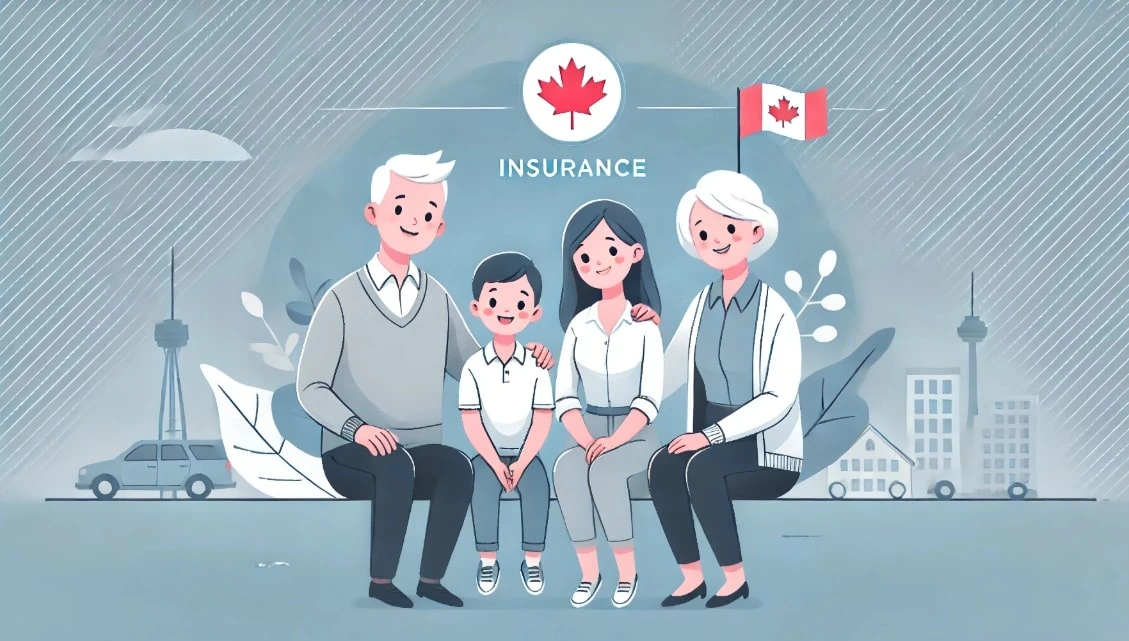
If you’re inviting your parents or grandparents to visit Canada under the Super Visa program, one of the first things you’ll need to secure is Super Visa insurance. And if you’ve started shopping around, you’ve probably noticed that Super Visa insurance rates can vary — a lot.
So, what exactly influences these rates? And more importantly, how can you keep costs manageable, especially if you’re considering a Super Visa insurance monthly plan?
In this article, we’ll break down what affects Super Visa insurance pricing, share cost-saving tips, and help you confidently navigate the process.
What Are Super Visa Insurance Rates?
Super Visa insurance rates refer to the amount you’ll pay for private medical insurance coverage that meets Immigration, Refugees and Citizenship Canada (IRCC) requirements for Super Visa eligibility. This insurance must:
- Be issued by a Canadian insurance company
- Cover at least
- Include emergency medical care, hospitalization, and repatriation
- Be valid for at least one year from the date of entry
The rate is essentially your insurance premium — either paid annually or via a monthly payment plan — and varies based on several personal and policy-specific factors.
Key Factors That Affect Super Visa Insurance Rates
1. Age of the Visitor
Age is one of the most significant pricing factors. The older the visitor, the higher the risk for medical emergencies — and therefore, the higher the premium.
- Visitors under 60 can expect lower rates
- Those aged 70 and above will see a sharp increase
2. Pre-Existing Medical Conditions
If the applicant has conditions like diabetes, high blood pressure, or heart disease, the insurer may:
- Increase the premium
- Add exclusions
- Or in some cases, deny coverage altogether
Stable pre-existing conditions are often covered, but the definition of “stable” varies (usually 90 to 180 days with no changes in treatment).
3. Coverage Amount
While $100,000 CAD is the minimum required, some families choose higher amounts ($150,000 or $300,000) for added peace of mind. Naturally, more coverage = higher premium.
4. Length of Stay and Policy Duration
A full 1-year policy is the minimum for Super Visa applicants, but some families plan for longer stays and extend coverage accordingly. Longer coverage = higher cost.
5. Deductible Chosen
A deductible is the portion the insured person pays before insurance kicks in. Choosing a higher deductible often lowers the premium, but increases out-of-pocket costs in case of a claim.
Example:
- $0 deductible = Higher premium
- $1,000 deductible = Lower premium
6. Insurance Provider & Plan Type
Different providers price their plans differently based on underwriting criteria, benefits, and claims history. Some also offer premium options with more perks or broader coverage, which affects the rate.
What Is a Super Visa Insurance Monthly Plan?
A Super Visa insurance monthly plan allows you to pay your premium in monthly installments instead of one lump sum. This option is gaining popularity because:
- It’s easier on the budget
- Allows you to cancel early if your parent/grandparent leaves Canada sooner than expected
- Refundable for unused months (depending on the provider)
✅ Great for flexibility, but keep in mind:
- Some insurers may charge slightly more for monthly plans
- You may need to set up automatic payments or provide post-dated cheques
Pros and Cons of Monthly Plans
| Pros | Cons |
| Easier cash flow | Slightly higher total cost |
| Refundable if visitor leaves early | Not all insurers offer it |
| No large upfront payment | May have cancellation fees or admin charges |
How to Lower Super Visa Insurance Rates
Looking to save money on Super Visa insurance without compromising on coverage? Here are some smart strategies:
✅ 1. Compare Quotes from Multiple Providers
Use online comparison tools or work with an experienced insurance broker. Rates can vary by hundreds of dollars for the exact same coverage.
✅ 2. Consider a Higher Deductible
If you’re confident the visitor is in good health, a higher deductible can significantly reduce your premium.
Example:
A $2,000 deductible can lower your annual premium by up to 25% compared to a $0 deductible.
✅ 3. Buy Early
Purchasing insurance well before your parents’ arrival date gives you more time to shop around — and some providers even offer early-bird discounts.
✅ 4. Choose a Monthly Plan (If Suitable)
If cash flow is tight, go for a monthly Super Visa insurance plan. It may cost a bit more overall, but avoids the burden of a large upfront payment.
✅ 5. Bundle Coverage
Some companies offer family discounts or bundled rates if you insure more than one person or combine policies.
Tips When Choosing a Plan
- ✅ Always read the policy fine print
- ✅ Check refund policies (in case of early departure or visa rejection)
- ✅ Confirm the plan meets IRCC requirements
- ✅ Ask about coverage for stable pre-existing conditions
- ✅ Ensure the plan includes repatriation coverage
Trusted Super Visa Insurance Providers in Canada
Some reputable companies offering competitive Super Visa insurance rates and monthly plans include:
- Manulife
- Travelance
- Allianz
- Tugo
- 21st Century Travel Insurance
- GMS (Group Medical Services)
Work with a licensed broker to help you find the best rates and customize the plan to your needs.
Final Thoughts
Understanding Super Visa insurance rates is the first step toward making a smart, affordable decision for your parents’ or grandparents’ extended stay in Canada. With prices influenced by age, health, deductible, and provider, it pays to research thoroughly.
If the upfront cost feels overwhelming, consider a Super Visa insurance monthly plan — it can offer both flexibility and peace of mind. And remember, the best policy isn’t just the cheapest one — it’s the one that gives you reliable coverage when it matters most.